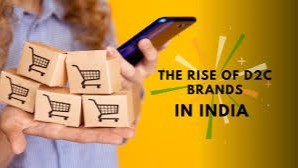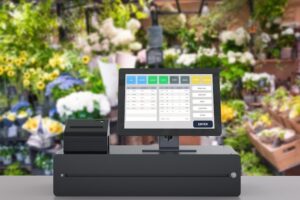The Rise of D2C in India: Revolutionizing How Brands Reach Consumers
Introduction The Indian retail sector is undergoing a seismic shift. While traditional brick-and-mortar stores and e-commerce marketplaces still dominate, Direct-to-Consumer...

Introduction
The Indian retail sector is undergoing a seismic shift. While traditional brick-and-mortar stores and e-commerce marketplaces still dominate, Direct-to-Consumer (D2C) brands are rapidly emerging as the new retail powerhouses. By bypassing intermediaries and selling directly to customers, D2C brands are reshaping how products are marketed, distributed, and consumed in India.
From startups to legacy players, businesses across categories like fashion, electronics, beauty, home appliances, and food are leveraging the D2C model to gain more control, higher margins, and deeper consumer engagement.
But what exactly is D2C? Why is it booming in India? And what makes it such a compelling business model in the digital age? Let’s dive in.
What is D2C (Direct-to-Consumer)?
D2C refers to a business model where a brand sells its products directly to customers, typically via its own website, mobile app, or physical stores, instead of relying on third-party retailers, distributors, or e-commerce marketplaces.
Key Characteristics of D2C:
- End-to-end control over product, pricing, and branding
- Direct interaction with customers
- Greater margins by eliminating middlemen
- Use of digital channels for marketing and customer acquisition
Why D2C is Booming in India
Several macro and micro factors are driving the rapid growth of D2C brands in India:
1. Digitally Empowered Consumers
India has over 850 million internet users, with increasing comfort in online shopping. Millennials and Gen Z prefer personalized experiences and are more willing to try new brands directly through social media or websites.
2. Rise of E-commerce Infrastructure
Payment gateways, logistics startups, and SaaS platforms have made it easier for brands to build and scale online stores with minimal capital investment.
3. Lower Customer Acquisition Costs
With targeted advertising on platforms like Instagram, Facebook, and Google, D2C brands can reach specific audience segments more effectively than traditional retail models.
4. Pandemic Push
COVID-19 accelerated the adoption of D2C as physical retail saw a steep decline and consumers shifted massively to online-first purchasing behavior.
Benefits of the D2C Model
1. Higher Profit Margins
By cutting out the middlemen (distributors, wholesalers, retailers), brands can retain more profits and offer better prices to customers.
2. Direct Customer Relationships
D2C enables brands to collect first-party data and build loyalty-driven, personalized relationships with customers, leading to higher retention.
3. Brand Control
From pricing and packaging to storytelling and customer support, brands have complete control over the customer journey.
4. Speed and Agility
D2C brands can respond quickly to market trends, customer feedback, and product improvements without depending on third-party retail cycles.
Challenges Faced by D2C Brands
Despite its advantages, the D2C journey isn’t without roadblocks:
1. Customer Acquisition Costs (CAC)
As competition increases, digital advertising costs are rising, making CAC a critical concern for scaling brands.
2. Fulfillment and Logistics
Unlike marketplaces like Amazon, D2C brands must build their own supply chain, warehousing, and last-mile delivery infrastructure.
3. Product Returns and Support
Managing returns, refunds, and customer support at scale requires robust backend systems.
4. Trust Building
New D2C brands often struggle with credibility compared to established marketplaces.
Successful D2C Categories in India
Several verticals are experiencing strong D2C traction:
- Fashion & Apparel: e.g., Bewakoof, The Souled Store
- Personal Care: e.g., Mamaearth, WOW Skin Science
- Electronics & Gadgets: e.g., boAt, Noise
- Home & Kitchen: e.g., Wakefit, FEDUS
- Food & Beverages: e.g., Epigamia, Country Delight
- Fitness & Supplements: e.g., OZiva, Myprotein
Tools Powering D2C Growth
Today’s D2C brands rely heavily on tech to scale efficiently:
- Shopify / WooCommerce: For setting up branded storefronts
- Razorpay / Cashfree: For payments
- Delhivery / Shiprocket: For logistics
- CleverTap / MoEngage: For customer engagement
- Google Ads / Meta Ads: For performance marketing
- Zoho / Freshdesk: For CRM and customer service
D2C vs B2C vs B2B: A Quick Comparison
Feature D2C B2C (via Marketplace) B2B Customer Relationship Direct Indirect Business-to-Business Profit Margins Higher Shared with platforms High volume, lower margin Branding Control Full Limited Moderate Scalability High (with tech) High Depends on distribution Customer Insights Deep analytics Limited Transactional
The Future of D2C in India
The Indian D2C market is projected to reach $100 billion by 2025, according to industry reports. The next wave will be shaped by:
- Tier 2 and Tier 3 city penetration
- Voice and vernacular commerce
- Hyper-personalization using AI
- Offline-to-online hybrid models
- Community-led growth via influencers
Major investments and acquisitions (e.g., Mamaearth IPO, boAt’s expansion, and Reliance investing in startups) indicate that D2C is not a trend — it’s a retail revolution.
Conclusion
D2C is not just about selling directly; it’s about owning the customer experience from start to finish. With technology leveling the playing field, even smaller brands can now reach millions without the need for intermediaries.
For entrepreneurs, D2C offers a lean, scalable, and profitable business model. For consumers, it promises transparency, quality, and personalized shopping. As India continues its digital journey, D2C is set to redefine commerce for the next generation.




